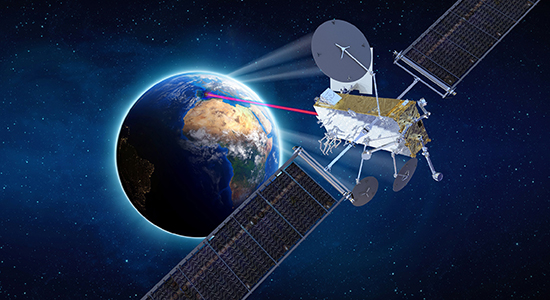Thales Alenia Space, the joint venture between Thales (67%) and Leonardo (33%), and its partners are pleased to announce the success of the field trial in Switzerland implementing a ground-ground very high speed laser communication link through the atmosphere. This is a major step towards next generation of Geostationary communications satellites using optical feeder links to double the current available feeder links capacity. These solutions will play a key role to bridge the digital divide and offer high-speed connectivity for all by 2025. The objective is also to boost satellites capacity in order to reduce the number of satellites required to satisfy the user demand, thus limiting the impact on environment.
During the test campaign, ETHZ, ONERA and Thales Alenia Space demonstrated a record transmission speed in free-space of up to 1 Tbit/s on a single wavelength and over a distance of 53 km. This achievement was established under extremely challenging conditions by transmitting data through a turbulent propagation channel between Jungfraujoch Research Station in Swiss Alps and Zimmerwald Observatory in the neighbourhood of Bern. The trial was the opportunity to test the combination of key technologies for optical links including adaptive optics, multi-aperture techniques as well as a variety of modulation formats.
VERTIGO is now moving to next and final step of the project dedicated to high power communication link tests in a laboratory environment at Thales Research and Technology.
Next step beyond this project will target a full-scale laser link between a geostationary satellite, at an altitude of 36.000 km, and a ground station.
For more information, visit: www.thalesaleniaspace.com












